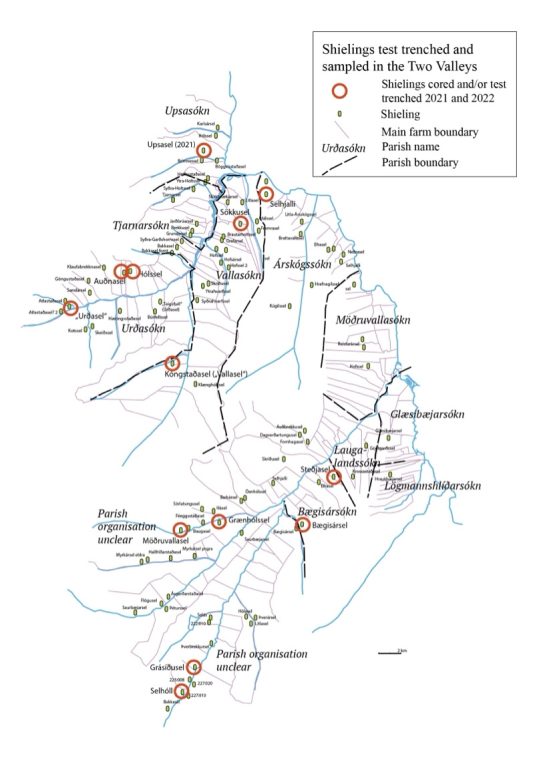Work package 1
Transhumance and its history
Árni Daníel Júlíusson and Gylfi Helgason
Historians have written surprisingly little on the topic of transhumance, but a major watershed came with the publication of E. Hitzler’s PhD in 1979. He produced a basic outline of the transhumance system in Iceland and that its primary function was related to dairy production. He also noticed an upsurge in sheiling sites in medieval times before being reduced dramatically after black death. Since then, our historical knowledge has not increased greatly, but in the last decades historians have engaged much more with the potential of the archaeological evidence, reasoning, and models together with palaeoecology to shed light on the transhumance system.
This work package is centred on three aspects: 1) Written sources about transhumance and shielings, from AD 1100 to 1800, 2) a novel spatial analysis of shieling sites found in Ísleif (the database of archaeological sites in Iceland), and 3) a review and a critical interrogation of the research literature concerning shielings in the North Atlantic area. Together these sources will be interrogated to analyse the spatial and temporal patterns of shielings in Iceland. An example of a research question to be answered is: Were shieling locations selected due to the presence of bodies of water, particular types of soil, slope or elevation and do these factors change over time? Are shielings located near other types of natural resources, for example water, peat for cutting or woodland? This will help us locate the Icelandic system in the wider world of North Atlantic transhumance and shieling structures and practices.

